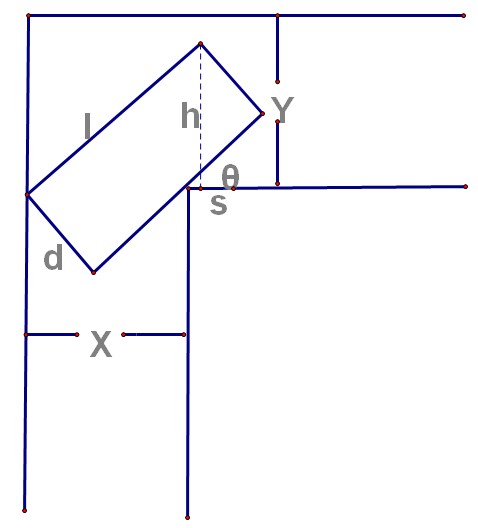#include <stdio.h>
#include <algorithm>
#include <vector>
#include <math.h>
#include <iostream>
#include <map>
#include <assert.h>
#include <string.h>
#include <ctype.h>
using namespace std;
enum ACTION {TRADE, CHEAT, EMPTY};
enum RECORD {LAST1, LAST2};
class Memory {
public:
map<RECORD, ACTION> R;
Memory() {
R[LAST1] = EMPTY;
R[LAST2] = EMPTY;
}
static ACTION getAction(string s) {
if(s == "TRADE") return TRADE;
if(s == "CHEAT") return CHEAT;
if(s == "EMPTY") return EMPTY;
assert(false);
}
ACTION getMemory(string addr) {
if (addr == "LAST1")
return R[LAST1];
if (addr == "LAST2")
return R[LAST2];
assert(false);
}
void record(ACTION a) {
ACTION last1 = R[LAST1], last2 = R[LAST2];
R[LAST1] = a;
R[LAST2] = last1;
}
};
class Strategy {
public:
char prog[1024];
Strategy(string s) {
for (int i = 0; i < s.length(); i++) {
prog[i] = s[i];
}
prog[s.length()] = '\0';
}
char* match(char *str, const char *p) {
if (str == NULL)
return NULL;
if (memcmp(str, p, strlen(p)) == 0)
return str + strlen(p);
return NULL;
}
/*
<condition> ::= <cond> | <cond> <op> <condition>
<op> ::= AND | OR
<cond> ::= <memory> {= | #} {<command> | NULL}
<memory> ::= {MY | YOUR} LAST {1 | 2}
<command> ::= TRADE | CHEAT
*/
bool cond(char* &p, Memory MY, Memory YOUR) {
// printf("condition %s\n", p);
char *q;
Memory *addr = NULL;
string read, equal, kind;
/* <memory> */
q = match(p, "MY");
if(q != NULL) p = q, addr = &MY;
q = match(p, "YOUR");
if(q != NULL) p = q, addr = &YOUR;
q = match(p, "LAST1");
if(q != NULL) p = q, read = "LAST1";
q = match(p, "LAST2");
if(q != NULL) p = q, read = "LAST2";
/* {= | #} */
q = match(p, "=");
if(q != NULL) p = q, equal = "=";
q = match(p, "#");
if(q != NULL) p = q, equal = "#";
/* {<command> | NULL} */
q = match(p, "TRADE");
if(q != NULL) p = q, kind = "TRADE";
q = match(p, "CHEAT");
if(q != NULL) p = q, kind = "CHEAT";
q = match(p, "NULL");
if(q != NULL) p = q, kind = "EMPTY";
bool ret = equal == "=" ? addr->getMemory(read) == Memory::getAction(kind) :
addr->getMemory(read) != Memory::getAction(kind);
// cout << "ADDR: " << addr->getMemory(read) << ", ACTION: " << Memory::getAction(kind) << endl;
// cout << read << ", " << kind << endl;
/* <op> <condition> */
q = match(p, "AND");
if(q != NULL) p = q, ret = ret&cond(p, MY, YOUR);
q = match(p, "OR");
if(q != NULL) p = q, ret = ret|cond(p, MY, YOUR);
// cout << "return " << ret << endl;
return ret;
}
ACTION ifstat(char* &p, Memory a, Memory b) {
char *q;
q = match(p, "IF");
if (q != NULL) {
p = q;
bool f = cond(p, a, b);
ACTION a1, a2;
q = match(p, "THEN");
p = q;
a1 = statement(p, a, b);
q = match(p, "ELSE");
p = q;
a2 = statement(p, a, b);
return f ? a1 : a2;
}
assert(false);
}
ACTION statement(char* &p, Memory a, Memory b) {
// printf("%s\n", p);
char *q;
q = match(p, "TRADE");
if (q != NULL) {
p = q;
return TRADE;
}
q = match(p, "CHEAT");
if (q != NULL) {
p = q;
return CHEAT;
}
return ifstat(p, a, b);
}
ACTION eval(char* &p, Memory a, Memory b) { // read only
// printf("eval %s\n", p);
return statement(p, a, b);
}
};
int main() {
char c, s[1024];
vector<Strategy> machine;
while (true) {
int n = 0;
while ((c = getchar()) != EOF) {
if(c == '.' || (c == '#' && n == 0) )
break;
if(isspace(c))
continue;
s[n++] = c;
}
if (n == 0)
break;
s[n++] = '\0';
machine.push_back(Strategy(s));
}
#define MAXN 20
int SCORE[MAXN] = {};
for (int i = 0; i < machine.size(); i++) {
for (int j = i + 1; j < machine.size(); j++) {
Memory ma, mb;
Strategy &A = machine[i];
Strategy &B = machine[j];
char *p;
for (int k = 0; k < 10; k++) {
ACTION ia = A.eval(p = A.prog, ma, mb);
ACTION ib = B.eval(p = B.prog, mb, ma);
if(ia == TRADE && ib == TRADE)
SCORE[i]++, SCORE[j]++;
else if(ia == TRADE && ib == CHEAT)
SCORE[i] -= 2, SCORE[j] += 2;
else if(ia == CHEAT && ib == TRADE)
SCORE[i] += 2, SCORE[j] -= 2;
else
SCORE[i]--, SCORE[j]--;
ma.record(ia), mb.record(ib);
}
}
}
for(int i = 0; i < machine.size(); i++)
printf("%3d\n", SCORE[i]);
return 0;
}
